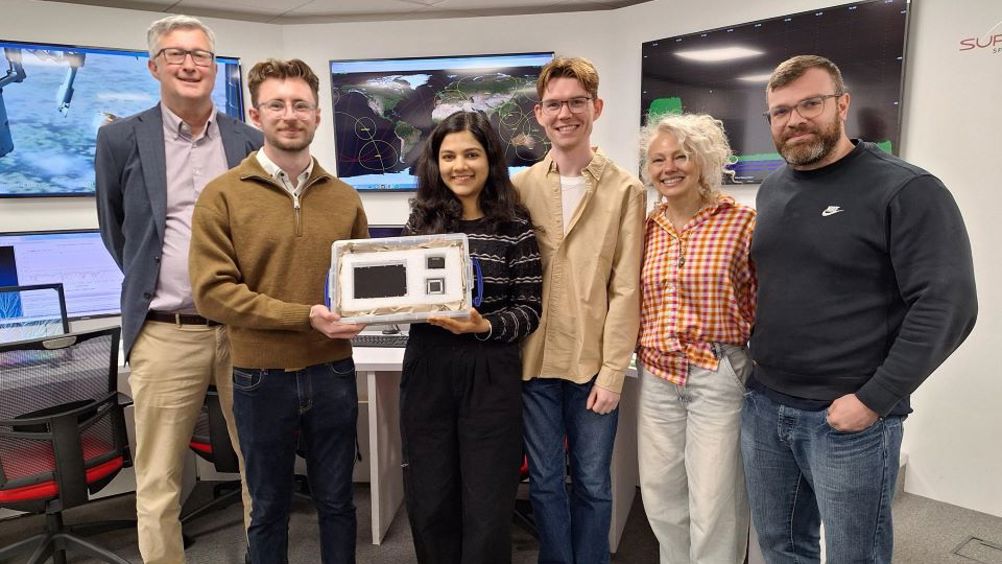Surrey teams work to take the shine off satellites
Surrey NanoSystems and Surrey University are working together to tackle the increasing issue of satellite brightness, a phenomenon that threatens ground-based astronomical research.

Over 8,000 low Earth orbit (LEO) satellites orbit Earth and projections estimate a rise to 60,000 by 2030, partly driven by the development of mega-constellations. The rate of growth means the issue of light reflecting from satellites back to Earth is pressing for astronomers and star gazers.
To combat this problem, satellite operators have begun experimenting with mitigation strategies including dark coatings and changes to satellite position, though the negative impact on ground-based measurement continues.
Ultra-black technologies specialist Surrey NanoSystems has developed a new solution with Vantablack 310, a handleable, customer applied coating that is resistant to the challenging LEO environment.
The technology will be trialled on Jovian 1, the first satellite mission from JUPITER – the Joint Universities Programme for In-Orbit Training, Education and Research. The mission, scheduled to launch in 2026, will carry payloads from the Universities of Surrey, Portsmouth and Southampton, AMSAT-UK, and one designed, built and tested by students from the three universities.
Register now to continue reading
Thanks for visiting The Engineer. You’ve now reached your monthly limit of news stories. Register for free to unlock unlimited access to all of our news coverage, as well as premium content including opinion, in-depth features and special reports.
Benefits of registering
-
In-depth insights and coverage of key emerging trends
-
Unrestricted access to special reports throughout the year
-
Daily technology news delivered straight to your inbox










Apprenticeship Funding Cuts to Cost Employers £214m
I had no idea the taxpayer was funding such an advanced level of education. Certainly graduates and post-graduates don´t receive comparable financial...